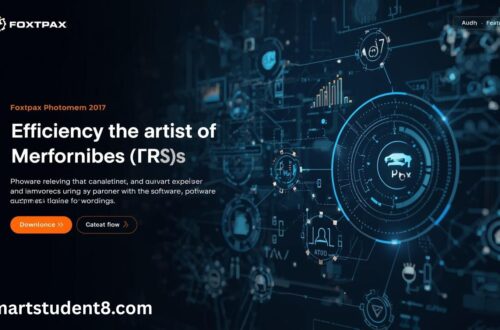The digital world is crowded. There are thousands of businesses, bloggers, and marketers all trying to get their voices heard. Years ago, I navigated the space by relying on my gut feeling, a mixture of intuition, experience, and some guesswork. After publishing an article that I felt passionate about, I would see it receive minimal traffic. A piece that was written quickly would go viral. It was frustrating to see this inconsistency. I felt like shouting in the wind and hoping that someone would listen. Many content creators have experienced this. Without a clear understanding of our audience and their performance, we are essentially working blind. The fog cleared up only after I began focusing on data-driven strategies. I began to investigate various analytics platforms. One term that appeared repeatedly was “Insights logicalShout.” This represents a change from guessing to knowing and from hoping to strategizing.
The term “Insights LogicalShout” is not just a trendy phrase. It’s a concept that encapsulates using an analytics platform called LogicalShout to turn raw data into clear and actionable strategies. Look at the numbers – page views, bounce rates, demographics of users – and understand the story that they tell about your audience. What are they interested in? When do they tend to be most active? What makes them click away from content? The key to creating content which is not just existing but also resonates with and performs is answering these questions. This article is a deep dive into the world of Insights LogicalShout. We will explore what it does, how it functions, and why this tool has become a must-have for anyone serious about building their online presence. We’ll use my personal experiences and examples from real life to show you how to apply these insights to your strategy to engage your audience and achieve measurable results.
What is Insights LogicShout exactly?
Insights LogicalShout is a term that refers to the analytical and data-driven intelligence capabilities of the LogicalShout Platform. LogicalShout is a hub of content focusing on esports and gaming. The “Insights’ component, however, represents the tool that it functions as. It has been described by other publications as a platform that helps businesses and content creators track key performance metrics (KPIs) and make informed decisions. Imagine it as a lens that allows you to see your audience’s performance and content with amazing clarity. Insights LogicalShout allows you to understand, rather than just knowing that a post has 1,000 views. It goes deeper to show where the views are coming from, how much time visitors spend on your page and what they do next. This takes you past vanity metrics into the realms of meaningful analytics.
In my own experience with content strategy, I have learned that not every analytics is created equal. Many platforms provide mountains of data, but they don’t offer much guidance as to what you should do with them. The concept of “actionable insight” is critical in this situation. A piece of information is an actionable insight if it directly influences a decision. Knowing your bounce rate, for example, is only data. It is a useful insight to discover that mobile devices have the highest bounce rate for pages with large images. You have a problem that you can solve. Optimise images for mobile users. This principle is the foundation of Insights LogicalShout. It is designed to bridge the gap that exists between complex datasets and practical, strategic action, which leads to tangible improvements in audience engagement and growth.
What are the core features that power your strategy?
In order to truly understand the power of Insights LogicalShout, we must look at specific features that allow users to transform data into decisions. These tools work together to provide a holistic view of your digital ecosystem. Many sources emphasize features such as real-time analytics and customizable dashboards. These features are not just fancy additions; they are what drive a data-informed approach. Understanding these components will help you to understand how to apply them to your work in order to eliminate guesswork and to focus your efforts on the areas that have the greatest impact.
Here are some of the key features that you may encounter.
- Real Time Data Analytics: The Digital world is moving fast. Trends that are popular today may be outdated tomorrow. Real-time analytics give you a current view of your performance. You can monitor traffic spikes live, track social media engagement in real-time, and gauge the response immediately to newly published content. It allows for flexibility. You can increase the promotion of an article that is doing exceptionally well to increase its reach. You can adjust or pause a campaign if it is not working.
- Customizable dashboards: Overload of data is a problem. Standard analytics reports can throw you dozens of metrics, some of which may not be relevant to your goals. You can filter out noise with customizable dashboards. You can create a view to show only the KPIs you care about. This could be organic traffic for a blogger or time spent on the page and newsletter signups. In an ecommerce store, this could be the conversion rate, abandonment of carts, or customer lifetime value. This customized view allows you to spot trends and track progress towards your goals easily.
- Advanced predictive analytics: Here’s where it gets really interesting. Predictive Analytics uses machine learning algorithms and historical data to predict future outcomes. You can use it to predict market shifts, identify content topics that will be popular, and identify customers at risk of leaving. By analyzing previous purchasing behaviours, a company could determine which products the customer will likely buy next, and then send them a targeted message. This proactive approach can give you a competitive edge by allowing you to act on future opportunities even before they happen.
Raw Data to Actionable Intelligence
Knowing how to turn raw data into intelligence that can be used is one thing. But knowing how to apply these features to make them actionable is another. Insight’s logical shout is used in this way. It is a combination of strategy and interpretation. Early in my career, I was completely overwhelmed by analytics reports. I was overwhelmed by the numbers, graphs and charts that I saw, but had no idea what to do with them for my next post. When I started asking the right questions about my data, a shift occurred. Instead of just focusing on what happened, I began to dig into the why and so what.
Although my articles on advanced marketing techniques received fewer views, the readers spent more time reading them and were more inclined to sign up for my newsletter. Raw data indicated “low views.” The actionable insight, however, was that there was a small segment of my audience who was highly engaged and hungry for content at the expert level. I created a series of premium content for them that became a significant source of revenue. Insights LogicalShout can facilitate this kind of transformation. It helps you to connect the dots among different data points in order to uncover hidden opportunities and refine your strategies. Every metric is part of a larger story. Your job is to put the pieces together in order to make better decisions and achieve your goals.
Real-World Applications: LogicalShout in action
Theoretical concepts are great, but they only work when you can see them in action. Insights LogicalShout’s principles can be used across industries to solve problems in the real world and increase growth. Data-driven decisions are a key factor to success for anyone, whether you’re running a small company, creating content, or managing marketing at a large organization. I’ve seen how a data-driven approach can transform a struggling campaign or uncover a previously unknown market segment.
Explore a few situations where these insights could make a real difference.
- Marketing optimization for an Ecommerce brand: A website selling leather products notices that sales are flat, despite constant traffic. To dig deeper, they use an analytics platform. While their Instagram ads generate a large number of clicks, only a small percentage of visitors actually make a purchase. Visitors coming from niche blogs have a higher conversion rate. What is the insight? The Instagram audience tends to be more general and less qualified, while the blog audience has a higher level of qualification and is interested in craftsmanship. The company reallocates their advertising budget by shifting funds from large Instagram campaigns to a niche blog or similar publications. In a quarter, their conversion rate has doubled, and their return on advertising spend has tripled.
- Content strategy for a food blogger: The goal of a food blogger is to increase organic traffic. They find out that the most popular posts on their blog are not their elaborate gourmet recipes, but rather simple 30-minute weeknight meals. Moreover, the traffic to their site spikes on Mondays and Sundays when people plan their weekly meals. What is the insight? They are a group of people who are busy and looking for easy, quick meals. Bloggers will now focus on simpler recipes. Every Sunday night, they also begin publishing their “weekly menu plan” posts. In six months, organic traffic has increased by 50%.
- Improving User Experience for a SaaS Company: A software-as-a-service (SaaS) company is concerned about its high customer churn rate. They track user behaviour in their application using analytics. They segment users who have cancelled subscriptions, and then analyze their activities in the week preceding the cancellation. The researchers discover a pattern: users who repeatedly visit the “help” page for a certain advanced feature, but never use it. What is the insight? The feature is overly complex and poorly described, leading to frustration and cancellations. The company creates an interactive tutorial to help users learn how to use the feature. It sends this out via email to all current customers. The churn rate dropped by 15% in the month following.
Enhancing your content with SEO and audience segmentation
Insights LogicalShout is most useful for bloggers and content marketing professionals. It can be used to optimize search engine results (SEO) as well as segment audiences. Both areas are closely related. It’s impossible to create content that will rank well without knowing who you are trying to reach. And you can’t reach your audience effectively without optimizing the content for their language of search. My SEO strategy was to stuff keywords in my articles for years. The results were not great, and it felt unnatural. When I began using data to understand the searcher’s intent better, my perspective changed.
Insights LogicalShout offers tools that go beyond simple keyword research. It allows you to understand the context of the search. What questions do people ask? What topics do they find interesting? This “keyword Intelligence” allows you to create comprehensive content that addresses the user’s requirements, increasing its value and likelihood to rank high. You might find that instead of focusing on the keyword “best shoes”, users also search for “best shoes for flat feet” or “how do I choose running shoes to run marathons.” You can then create targeted, more specific content to capture long-tail traffic. This will also establish your authority in the field. This is where audience segmentation comes in. You can segment your audience by analyzing the data you collect. For example, you might identify groups such as beginners vs. professionals, casual browsers and ready-to-buy clients. Then, you can tailor your marketing and content to address the specific needs and problems of each segment. This will make your communication more effective.
How to Create a Data-Driven Work Culture
Insights LogicalShout’s power is not confined to one individual. The true potential of Insights LogicalShout is realised when it creates a data-driven culture within an organisation or team. The entire business will operate more efficiently when everyone, from marketing to sales to product development to customer service, uses data to guide their decisions. This was a turning point for a company that I consulted for. The marketing team used analytics to optimize campaigns, but the sales team still relied on cold calling and intuition. There was a disconnect.
We integrated their systems and created shared dashboards to show the entire customer journey from the initial ad click through to the final purchase. The sales team now knew which leads were “hot” because they downloaded a whitepaper or watched a demonstration video. The sales team could now tailor their pitch to the content that the lead engaged with. Sales gave feedback to the marketing team on which leads converted, which allowed them to fine-tune their targeting. The collaboration, fuelled by data sharing, was transformational. This culture requires more than simply buying a tool. This requires training, defining clear goals and celebrating successes. Share the success stories of team members who have used an insight to improve their process or secure a large client. This helps to demonstrate the value of a data-driven strategy and encourages other people to adopt it.
Evidence-based strategy: The competitive advantage
Few can afford to rely on gut instincts in a competitive marketplace. It is almost certain that your competitors use data to gain an advantage. A data-driven strategy powered by Insights LogicalShout and other tools is not just a good thing; it is vital for growth and survival. Risk is inherent in every decision. From the headline of a post on a blog to a product launch worth millions of dollars, each one carries some level of risk. Data can help mitigate this risk. Data provides an additional layer of validation by confirming your decision is based on facts and not just assumptions.
You can be more responsive and agile with this data-driven strategy. You can identify quickly what is working and increase your efforts. You can also quickly identify what’s not working and pivot, without wasting time or resources. I’ve seen companies spend an entire marketing year on a strategy that failed from the beginning, because they didn’t look at the data. In the opposite situation, I have seen businesses adapt their messages in real-time during a campaign to turn a possible failure into a great success. A platform like Insights LogicalShout offers the greatest competitive advantage by allowing users to adapt and learn in real time. It turns your business into an adaptive machine that is constantly improving and optimizing based on feedback from your audience.
Get Started: First steps into data-driven content
It can be daunting to dive into data analysis, but it is much easier than you might think. Start with a simple goal and some basic metrics. Do not try to track all metrics at once. What do you want to change right now? What is your primary objective? Is it to increase website traffic, generate more leads or improve customer retention? Once you’ve identified your primary goal, you can identify two or three metrics that will allow you to measure your progress towards that goal.
If you want to increase your organic traffic, for example, your key metrics could be:
- Total organic sessions: Number of visits from search engines to your website.
- Top organic landing pages: Pages that receive the highest traffic from search.
- Ranking of Keywords: Position in the search results for keywords you are targeting.
Track these metrics regularly. Create a simple dashboard that allows you to see them all at once. Spend 15-20 minutes a week looking at your dashboard to find patterns. What types of content are driving organic traffic the most? Are your keyword rankings improving or declining? This simple routine will help you build a habit of data-driven decision-making. You can ask deeper questions as you gain more experience. Insights LogicalShout’s journey is not a sprint, but a marathon. Start small and be consistent. Over time, you will gain confidence and skills. Making informed decisions based on evidence will bring you clarity and success.





